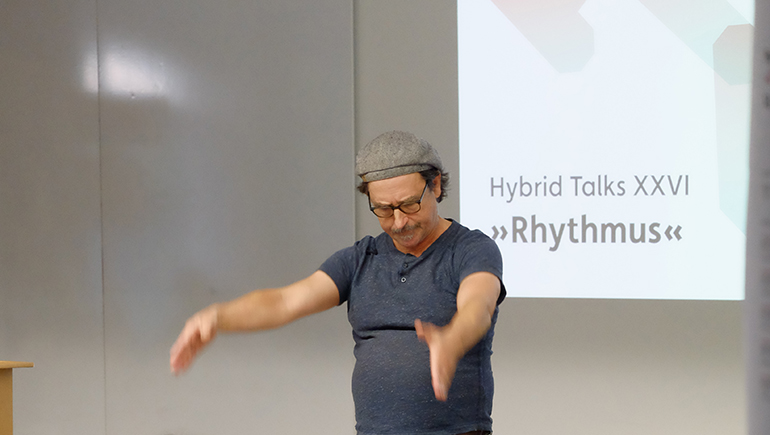The last Hybrid Talks on “Rhythm" were hopefully an inspiration to the whole audience. As always the talks were an opportunity to gain food for thought and to discover connections between the various disciplines that were presented on a warm summer evening in the Hybrid Lab. Our colleague Lina sums up her impressions, thoughts and insights of the event.
Those who joined our Hybrid Talks last week can tell you a thing or two about it: Rhythm is an interdisciplinary phenomenon which occurs in many different contexts. Whether it is Metropolitan Studies, medicine, physics or performance art – they all involve rhythmic rules, chaos or reoccurring habits that reflect (human) interaction with certain spaces and systems (that we inhabit).
It is one of these topics that grows in magnitude once it’s examined from different perspectives.
Rhythm is the beat of a city. Living within a complex space with so many other people requires a certain set of rules which we automatically submit ourselves to. Just think of ants in their anthill – they would never achieve such an impressive work without a steady rhythm of their community. In a similar mode we take for granted rules such as stopping at the traffic lights and getting up in the morning and sleeping at night.
Which takes us directly to the medical aspect of rhythm: Rhythm is the ground rule of life. Every being can only achieve maximum performance if it sticks to its own biological rhythm. It is a relief to hear from a chronobiologist scientist that being tired after seven hours of sleep can just mean that we did not listen to the ticking of our own inner clock. Some need more, some need less sleep – simple as that! Even if some parents of sleepwalking pubescent children probably would rather not hear about it...
Rhythm is still a phenomenon that raises issues. Although we believe that nowadays almost everything is known, we can still be confronted with essential questions. The question why the linking of several pendulums (or other elements of a closed system) lead to chaos, conformity and a mixed state between these two at the same time remains a mystery. In physics this specific blind spot – a simultaneous mixed state between chaos and order - is already known since the 17th century as “chimera“.
Rhythm is a means of communication, of imitation and, thus, of art. If we listen to rhythmic music, we feel entertained or even motivated to move our body to the beat. Language can create rhythm but also amusing irritation when the mind is faster than the tongue and funny words slip out of the mouth. Music, performance, rhymes, stories and words – art is full of rhythm or chaos and therefore a mirror of our (subconsciously) timed and cycled lives.
– Lina

